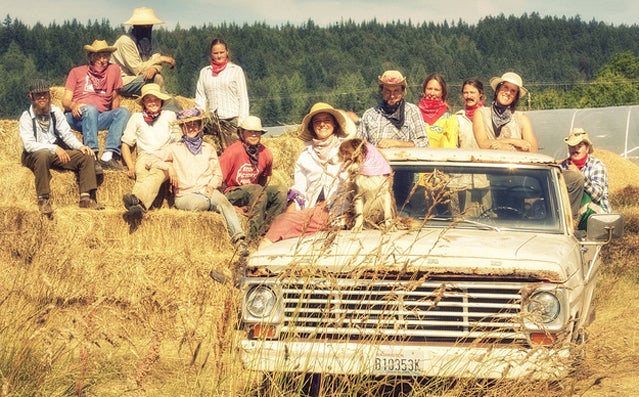
As summer wanes and garden harvests start to dwindle, this news lands with a thud: a recent study performed at Stanford University indicated that
eating organic produce doesn’t necessarily mean eating more nutritious produce.
If you figured this would raise the ire of organic food
advocates, you were right. Much of the debate that arose from this research and the
breathless headlines it generated, however, focuses on what the study did not
consider. There is no question that food raised “conventionally”—that is to
say, with the aid of any number of synthetic pesticides—does harm to those
who grow and produce the food, and to the surrounding ecosystem.
The takeaway is that while an organic tomato might not make
you healthier than a conventional one, a conventional tomato may well do more
harm to its producer. So buying organic is one way to vote for better
agricultural working conditions. It’s one way to vote for fewer fertilizers and
chemicals entering the environment. (Suggested reading for more on this is “” over at Earth Island Journal.)
But there’s another element to organically-raised food that
we should consider: it is a conduit for connecting people and landscapes.
Without organic farms, adventure travel would suffer.
Take, for example, , or WWOOF. Since the early 1970s, this
organization has connected travelers, who are willing to volunteer their time
and efforts, with organic farmers that will provide a place to stay and food to
eat. While that alone might not sound like a hair-raising adventure, traveling from
farm to farm can extend and deepen an experience abroad.
Alexander Tarr, a Ph.D. candidate in the department of geography at the University of California, Berkeley, says he and his then-girlfriend spent nine months
traveling through Europe in 2006—a trip made possible by WWOOF farms.
“We worked at eight different farms, a variety of different
places,” he says. “We had saved up some money, both quit our jobs and were
planning to start grad school, so it was like a pre-grad school gap year. We’d spend a few weeks at a farm, and then go to Paris for
a few days, then back to another farm and then maybe go to Morocco.”
The farm stays are far from sedentary—you’re expected to
work seven hours a day, six days a week, and Tarr notes that they often worked longer
hours just because the farmers did and “it would have been weird to say, 'OK,
you might have a half-day of farming left to do, but I’m going to bike into
town….'”
There are WWOOF farms in North and South America, Europe,
the Middle East, Africa and Asia. Consider this: you're not only staying with
farmers who have local knowledge and can direct you to the best trails, lakes,
rivers, etc., you're also living with people who have to obsessively watch the
weather and understand local weather patterns.
Even domestically, organic farms can enrich travel and serve
as a base camp for meandering. Agritourism (a fancy name for farm tours) doesn't
just mean staid pumpkin picking or wine tasting. Pro skier Alison Gannet and
her partner run a 75-acre organic farm in the North Fork Gunnison Valley of Colorado,
from where she’s staging a ,
as part of the Paonia , September 27-30.
Have you used farm work-stays as part of an epic journey? Know
of another great, active farm tour? Let us know by leaving a comment.
—Mary Catherine O'Connor